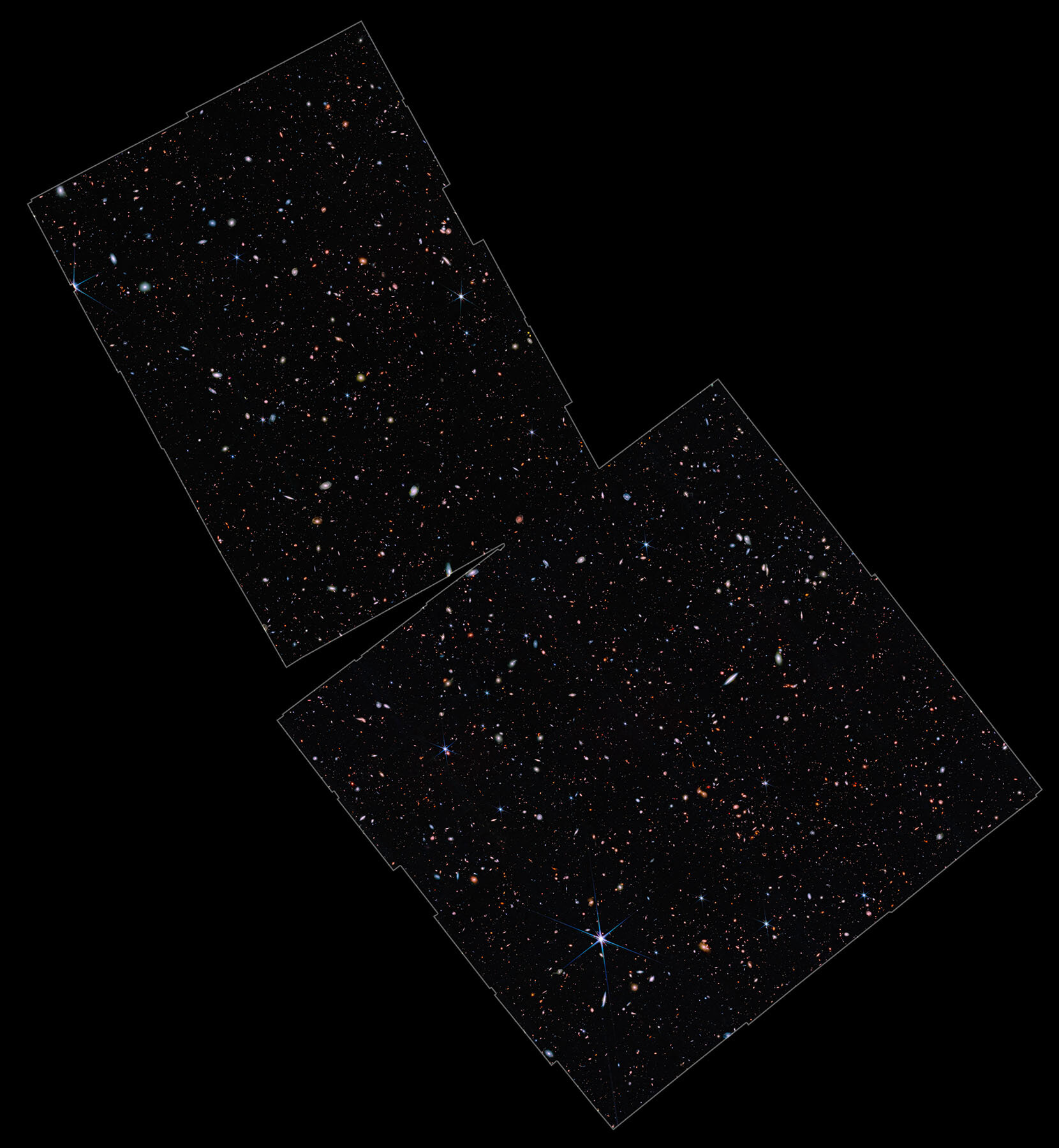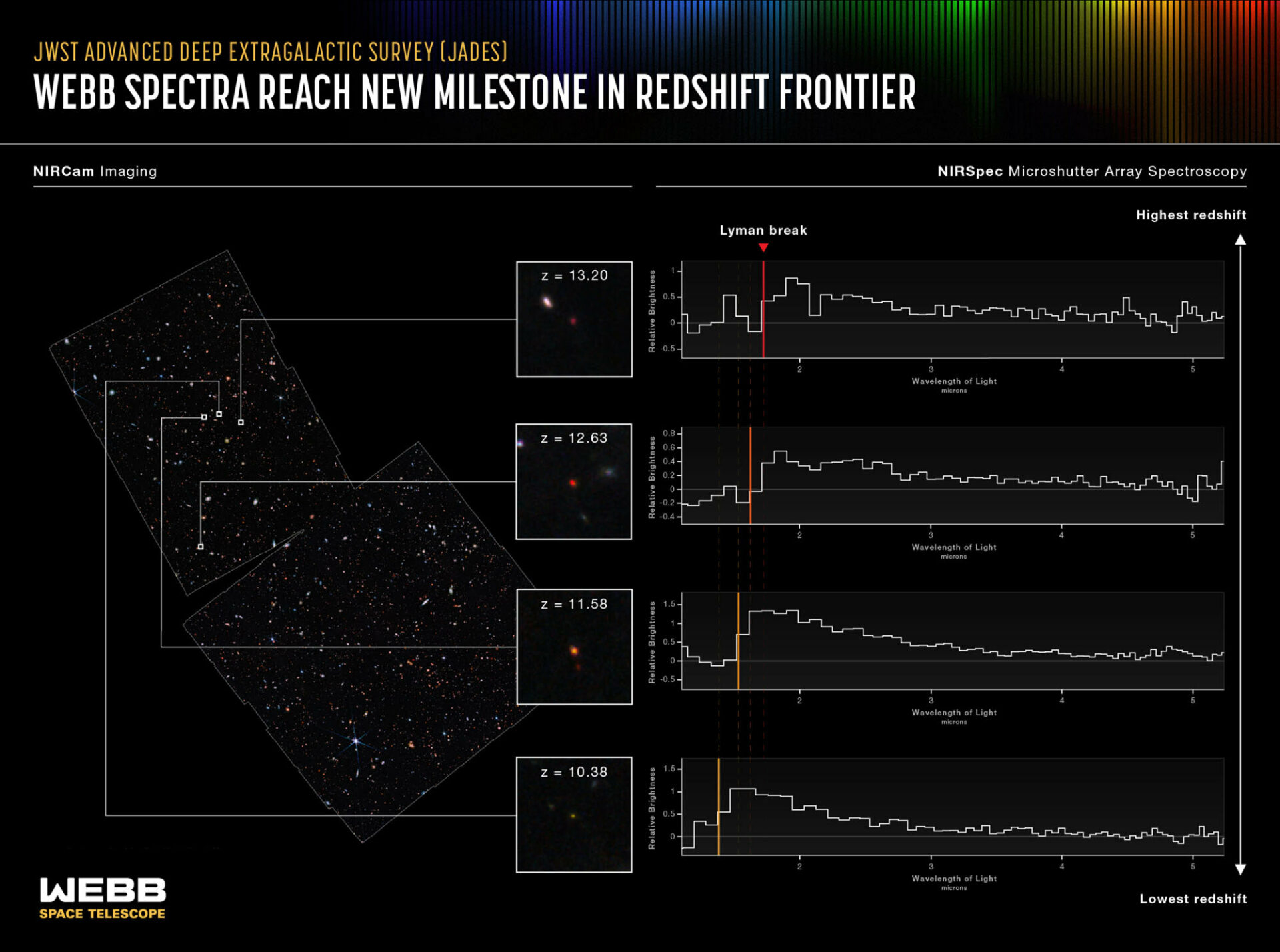At the beginning of its work, the James Webb Space Telescope made an incredible discovery — four distant galaxies at once, considered to be record-distant, or the oldest that astronomers had ever seen. The distance figures obtained were too large, so scientists were in no hurry to record the discovery in records, because it needed additional verification.

These galaxies were detected in images taken by the Near Infrared Camera (NIRCam) on board the James Webb. Now, after months of research, scientists have analyzed their chemical composition and determined how fast these galaxies are moving away from JWST. Thus, astronomers have confirmed that these are indeed the most distant galaxies in the Universe.
Light from four galaxies took more than 13.4 billion years to reach us. More precisely, the telescope sees galaxies as they looked 350 million years after the Big Bang, when the age of the Universe was only 2% of its current age. But the galaxies themselves, in theory, began to form even earlier.
Highest redshift value
To confirm that galaxies are really that old, astronomers should get accurate estimates of the so-called redshift from the NIRSpec data. Redshift causes objects moving away from us to look redder as a result of the expansion of the Universe, which stretches the light emitted by distant stars and galaxies into longer, red wavelengths of the light spectrum.

The most distant of the galaxies discovered by James Webb showed a redshift value of z=13.2, which corresponds to an age of approximately 13.5 billion years — the highest value ever measured for any galaxy.
The observations were carried out as part of the JWST Advanced Deep Extragalactic Survey (JADES) project, which used NIRCam and NIRSpec to study the early Universe in ways previously impossible. Now astronomers want to look at individual stars in these galaxies, some of which could have been born 100 million years earlier than the age at which the telescope saw them.
Earlier we reported that a treasure was found on the very first image of James Webb.
Follow us on Twitter to get the most interesting space news in time
https://twitter.com/ust_magazine

